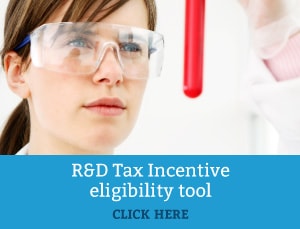Senate Committee Manufacturing Industry Inquiry Recommends Periodic Review of R&D, Commercialisation, and Investment Incentives
February 11th, 2022
The Senate Economics Committee has this week released its report of inquiry into the Australian manufacturing industry.
The terms of reference of the inquiry included review of the role that government can play in assisting domestic manufacturing industry, with regard to research and development and other factors.
Notable statistics from the report include:
- Australian investment in R&D has declined over the last 20 years and is well below the OECD average. Relative to Australia’s GDP, R&D expenditure is around 1.8 per cent––its lowest levels since 1995;
- In 2019–20 the Australian Government spent around $10.2 billion on private and public sector R&D, with around $772 million—or 20 per cent— of this going to manufacturing. Key measures include the Research and Development Tax Incentive (RDTI) ($2.4 billion, CSIRO ($616 million) and cooperative research centres (CRCs) ($145 million);
- Private investment in R&D has also declined since the mid-2000s with manufacturing firms spending $4.6 billion on R&D in 2017–18;
- Australia has relatively low rates of collaboration between business and industry and low rates of innovation, impacting on its global competitiveness
The inquiry went on to conclude that
- “Australia’s R&D performance has some bright spots but is generally not delivering on its full potential” and that more is needed to address the industry’s skills shortage, including focus on skills and training, and creating secure, well-paid employment;
- “Collaboration needs to be improved both domestically and with international partners to develop the innovation and scale necessary for Australia to realise the benefits from its R&D activities”;
- There are “serious deficiencies in Australia’s skills and training in particular in Australia’s vocational education and training (VET) sector”;
- “The current levels of support provided to apprentices are inadequate to support them through their qualification and are insufficient to attract the new blood necessary to fill existing and forecast future skills shortages across a range of occupations”.
Among the 19 recommendations made by the Committee, was that the Australian Government:
- Consider the periodic review of R&D, commercialisation, and investment incentives and tax arrangements (including the effectiveness of existing incentives and governance, implementation, and reporting, and any further mechanisms that would improve R&D, commercialisation, and investment outcomes);
- Consider providing significant increases to manufacturing R&D and commercialisation support to improve international competitiveness and stimulate the development of self-sustaining manufacturing ecosystems;
- Consider changes to improve skills, industrial relations, government procurement and use of superannuation fund investment;
As an indication of divergence in policy between the major parties, the report also contained a dissenting report by Liberal Senators Paul Scarr and Andrew Bragg, who disagreed with a number of key recommendations, and argued that some recommendations “underpin a government driven interventionist approach in the manufacturing sector”.
Swanson Reed notes the following in respect of Senate Economics report of inquiry into the Australian manufacturing industry and implications for the R&D Tax Incentive:
- Local manufacturing capability is crucial, and the conduct of R&D Activity is vital if Australian industry is able to be competitive and sustainable;
- The R&D Tax Incentives plays a crucial role in providing companies confidence and support to conduct R&D Activity in Australia;
- The statistics in the inquiry citing a decline in Australian investment in R&D align with a tumultuous period in the R&D Tax Incentive whereby:
- Several actual and proposed cuts to the programme were experienced;
- The compliance environment was difficult for all participants (companies, advisors and regulators);
- We anecdotally noted during this tumultuous period that companies were reluctant to rely on the R&D Tax Incentives (particularly for long term projects) out of fear that legislative foundations or interpretations would be changed subsequent to or partway through companies’ investment;
- Progress has however been made in the past couple of years whereby the administrative operation and legislative foundation of the R&D Tax Incentive now appear better and more stable following changes and legislative amendments passed for the FY22 period;
- Given the high cost of the programme (approximately $2.5 billion annually over the programme’s life) it is important that the programme is periodically reviewed for effectiveness as has been recommended by the inquiry;
- We do note that there have been numerous reviews of the programme conducted in recent years, including:
- The Government’s own review by Ferris, Finkel, Fraser;
- The board of taxation review;
- The Small Business Ombudsman review etc;
- Any future reviews should not propose significant changes to the administration or criteria of the R&D Tax Incentive, and given the recent tumultuous history of the programme, it should be subject to a period of stability so as to regain companies’ trust in the programme.
Categories
- ATO Guidance and Materials
- AusIndustry Guidance and Materials
- Case Law
- Federal Budget 2021
- Federal Budget 2022
- For Accountants
- General Information
- Government Policy and Treasury
- Industry Specific Issues
- Interpretative Decisions
- Legislation and Parliamentary Matters
- R&D Tax Credit
- R&D Tax Funding Strategies
- R&D Tax Loans
- Recent News
- Tax Determinations
Archives
- April 2024
- March 2024
- February 2024
- January 2024
- December 2023
- November 2023
- October 2023
- September 2023
- August 2023
- July 2023
- June 2023
- May 2023
- April 2023
- March 2023
- February 2023
- January 2023
- December 2022
- November 2022
- October 2022
- September 2022
- August 2022
- July 2022
- June 2022
- May 2022
- April 2022
- March 2022
- February 2022
- January 2022
- December 2021
- November 2021
- October 2021
- September 2021
- August 2021
- July 2021
- June 2021
- May 2021
- April 2021
- March 2021
- February 2021
- January 2021
- December 2020
- November 2020
- October 2020
- September 2020
- August 2020
- July 2020
- June 2020
- May 2020
- April 2020
- March 2020
- February 2020
- January 2020
- December 2019
- November 2019
- October 2019
- September 2019
- August 2019
- July 2019
- June 2019
- May 2019
- April 2019
- March 2019
- February 2019
- January 2019
- December 2018
- November 2018
- September 2018
- July 2018
- June 2018
- May 2018
- April 2018
- March 2018
- February 2018
- January 2018
- December 2017
- November 2017
- September 2017
- August 2017
- July 2017
- June 2017
- May 2017
- April 2017
- March 2017
- February 2017
- January 2017
- December 2016
- November 2016
- October 2016
- September 2016
- August 2016
- July 2016
- June 2016
- May 2016
- April 2016
- March 2016
- February 2016
- January 2016
- December 2015
- November 2015
- October 2015
- September 2015
- August 2015
- July 2015
- June 2015
- May 2015
- April 2015
- March 2015
- February 2015
- January 2015
- November 2014
- October 2014
- September 2014
- August 2014
- July 2014
- June 2014
- May 2014
- April 2014
- March 2014
- February 2014
- January 2014
- December 2013
- November 2013
- October 2013
- September 2013
- May 2013
- April 2013
- March 2013
- September 2012
- August 2012
- June 2012


 Free Call: 1300 009 390
Free Call: 1300 009 390





 News & Research
News & Research



